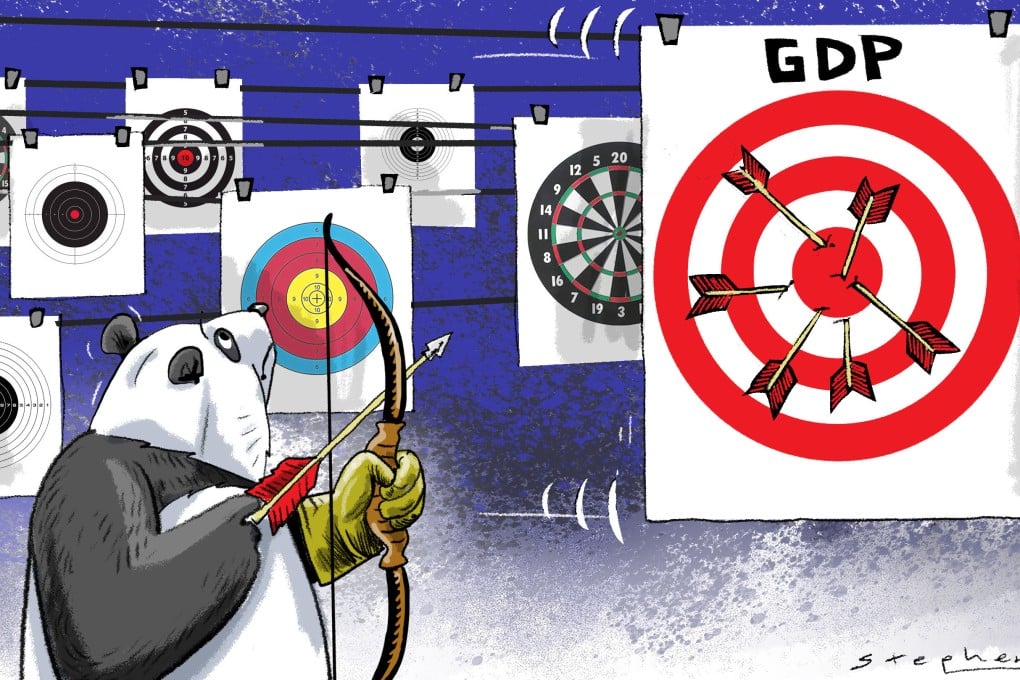Advertisement
Opinion | China’s economic headache: setting targets for quality development
- As Beijing aims for quality growth, it makes sense to dilute or even ditch GDP targets, but this is difficult in practice
- Central planners also need to prune the burgeoning list of goals for local governments and grapple with the difficulty of imposing quantitative targets while emphasising quality
Reading Time:4 minutes
Why you can trust SCMP
1

When a country is poor, everything is tough, but at least the goal is crystal clear: raise gross domestic product (GDP). But when a country becomes richer, it turns out that problems do not end – they only become harder to pin down, juggle and solve. This is the struggle facing the Communist Party leadership under Xi Jinping today, even as it proudly declares that it has eliminated absolute poverty.
Advertisement
At the “two sessions”, China’s annual legislative meetings, Beijing set a GDP growth target of 6 per cent for this year. However, unlike in previous years, it did not specify a GDP target for the next five years. This has sparked feverish debates on whether Beijing will abandon GDP targets altogether, and what new targets it will set to achieve its national ambitions.
These debates miss a much deeper problem: as Beijing aims for “quality development” – a long-term, overarching vision pronounced in the 14th five-year plan and medium-term plan to 2035 – central planners are finding it increasingly difficult to set targets. This is true not only for GDP growth but also all other goals.
Since reform and opening up began in 1978, Beijing’s singular focus on economic growth has turbocharged the country’s rapid economic ascent. From 1978-2018, China clocked an average growth rate of 9.5 per cent, an achievement that the World Bank describes as “the fastest sustained expansion by a major economy in history”.
But this fixation with growth has come at a heavy price. Because GDP growth was prioritised above all other goals, the environment has deteriorated, natural resources were depleted, inequality rose and elite corruption exploded. Moreover, as GDP by itself does not measure the quality of inputs, local officials can easily drive up growth by borrowing and building more – leading to mounting levels of public debt. As a refrain in China goes: you can produce GDP by digging a hole and filling it up.
Beijing’s shift in emphasis from quantity to quality of development is a natural progression as China grows more affluent. More GDP cannot satisfy the growing aspirations of the Chinese people, nor can it boost China’s competitiveness vis-à-vis the United States, an economic and technological superpower.

Advertisement
